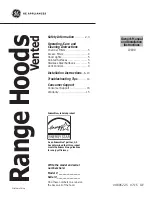
Cookware
The best cooking results and the most economical use of
electricity will be achieved by using smooth, flat-bottom
pans. Pans should be at least the same size or slightly
larger than the cooking area. Ceramic cookware suitable
for stovetop cooking may be used. If pans smaller than the
size of the heating element are used, care should be taken
as the handles may get hot.
Built into each element, is a safety device which protects the
element from overheating. If using pans which are not ideal,
for example concave or convex bottom pans with shiny
bases, or those with ridged or grooved bottoms, the thermal
limiter can cause the element to switch off and on during
cooking, which means that food will take longer to cook.
Very thin, badly dented, and distorted pans with uneven
bottoms should not be used.
Pans with very shiny or reflective bottoms should not be
used.
Never place utensils with a skirt (e.g. a wok) on the
heated area.
Pans should not have rough bottoms. Do not slide pots on
the ceramic glass cooking surface, as this may mark or
scratch the cooktop.
If pans with aluminum bottoms are slid across the cooking
surface, metal marks could result. Such marks are easily
cleaned with any non-abrasive stainless steel cleaner,
provided they are removed immediately and not allowed
to bake onto the surface.
Any guidelines or recommendations given by the
saucepan or cooking utensil manufacturer should be
followed.
SELECTION & USE OF POTS & PANS
Flat Bottoms
Thick, flat bottoms absorb and distribute the heat from
the element more evenly. Thin, uneven bottoms waste
energy and create hot spots that may burn the food onto
cookware.
Glass cooktops require heavy gauge flat bottom pans for
best cooking results.
Check flatness with a ruler or straight edge. See figure 7.
Figure 7
Pot Diameter
Select element to match pan diameter. The pot should
be slightly larger than the element to obtain best energy
usage, and avoid spillovers flowing directly onto element.
Do not use pans extending more than one inch beyond
element, except while canning. See figure 8.
Figure 8
Small diameter pans waste energy and spillage can flow
onto element. This increases chance of fire and burns.
Use non-stick coated cookware, for easier clean up.
Glass or pyroceram pans should be used only as the
manufacturer describes.
Pressure cookers, deep fat fryers, canners, etc. must be of
the correct size and have flat bottoms to work properly.
Energy Tips
Use cookware with tight-fitting lids, and flat bottoms
which completely cover the heated portion of the element.
Watch foods when bringing them to cooking temperatures
at high heat. When food reaches cooking temperature,
reduce heat to lowest setting that will keep it cooking.
Use residual heat with surface cooking. For example,
when cooking eggs in the shell, bring water to a boil,
then turn element off, and allow heat in water to complete
cooking.
When boiling water for tea or coffee, heat only the
amount needed. Do not use a wire trivet or any other kind
of heat retarding pad between the pan and the element.
Things Not To Do On A Ceramic Cooktop
• Do not leave pots unattended or elements ON for
extended periods of time. If an element is mistakenly
left on for an extended period of time the built in thermal
limiter will ensure that the heat build-up is insufficient
to cause any adverse effects.
• Do not cook directly on the ceramic cooktop. The
surface of the cooktop can be damaged, and will be more
difficult to clean.
• Do not use wire trivets mats or aluminum foil. They
offer no cooking advantages and can damage the
ceramic glass surface. Never place plastic or any other
material which might melt on any part of the cooktop.
• Do not use the cooktop as a chopping board or cutting
surface. This type of use can scratch the surface.
• Do not leave heavy spills during cooking. Turn heat
off and allow surface to cool down. Remove the spills
11












































